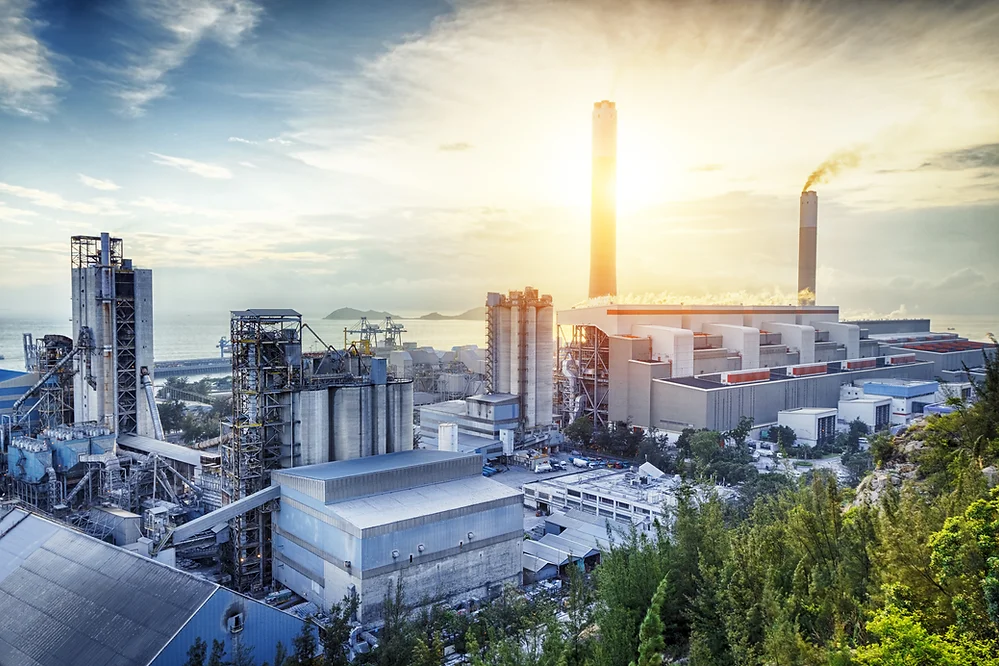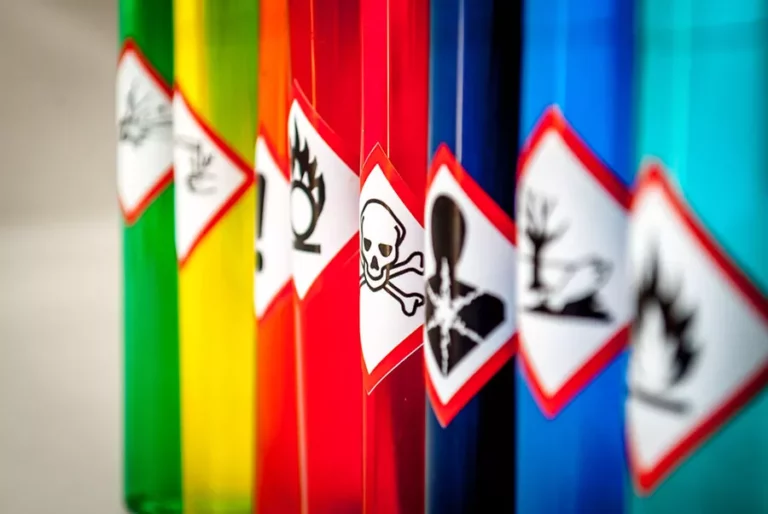Mixing chemicals can lead to hazardous reactions, posing serious risks to both health and safety. According to COSHH regulations, it is crucial to never mix chemicals due to the unpredictable nature of resulting reactions. Combining certain substances can release toxic fumes, cause explosions, or generate harmful byproducts. These reactions may not only harm individuals handling the chemicals but also have far-reaching consequences for the environment.
COSHH emphasizes the importance of strictly following the guidelines on chemical usage to prevent accidents and ensure workplace safety. By avoiding chemical mixtures, we prioritize the well-being of individuals, uphold regulatory compliance, and contribute to a safer working environment for everyone.
What is COSHH?

COSHH stands for “Control of Substances Hazardous to Health.” It refers to a set of regulations designed to protect the health and safety of individuals who work with or are exposed to hazardous substances in the workplace.
These regulations, established in many countries, provide a comprehensive framework for the management and control of substances that could be harmful to health.
The regulations cover a wide range of substances, including chemicals, fumes, dust, biological agents, and more. COSHH requires employers to assess the risks associated with these substances and implement control measures to prevent or minimize exposure.
This assessment involves identifying the substances in use, evaluating potential health hazards, and determining appropriate preventive measures.
Purpose and objectives of COSHH in workplace safety
The primary purpose of COSHH is to safeguard the health and well-being of workers by effectively managing and controlling exposure to hazardous substances. The key objectives of COSHH in workplace safety include
Risk Assessment: COSHH requires employers to assess the risks associated with hazardous substances. This involves identifying the nature of the substances, understanding potential exposure routes, and evaluating the severity of health effects.
Control Measures: Once risks are identified, COSHH mandates the implementation of control measures to either eliminate or minimize exposure. This may include using alternative substances, introducing engineering controls, or providing personal protective equipment (PPE).
Information and Training: Employers are obligated to provide information and training to employees regarding the hazards of substances they may encounter. This ensures that workers are aware of the risks, know how to use protective measures, and understand emergency procedures.
Monitoring and Review: Continuous monitoring of workplace conditions and regular reviews of risk assessments are integral to COSHH. This ensures that control measures remain effective and relevant over time.
Emergency Planning: COSHH requires employers to have emergency plans in place, detailing procedures to be followed in the event of accidental exposure, spills, or releases of hazardous substances.
What Are The Dangers of Chemical Mixing?
Chemical mixing involves combining different substances, and this can lead to various reactions with potentially hazardous outcomes.
Unintended Reactions: When certain chemicals are mixed, they may react in unexpected ways, producing harmful byproducts. For example, mixing bleach (containing chlorine) with an acidic cleaner can release toxic chlorine gas.
Temperature Changes: Some reactions can generate heat, leading to a rapid increase in temperature. This can result in the release of hazardous fumes, fire, or even explosions.
Formation of Unstable Compounds: Certain combinations of chemicals may form unstable compounds that can decompose or explode, posing serious risks to those in proximity.
Corrosive Effects: Mixing incompatible chemicals can lead to corrosive substances that may cause damage to equipment, infrastructure, and, more importantly, harm to individuals.
Real-life examples of incidents due to chemical mixing
Texas City Refinery Explosion (2005): One of the most notorious incidents involved the explosion at the BP Texas City refinery. Chemical mixing and overfilling of a reactor led to a release of highly flammable hydrocarbons, resulting in a catastrophic explosion and multiple fatalities.
Bhopal Gas Tragedy (1984): In Bhopal, India, a tragic incident occurred when water entered a storage tank containing methyl isocyanate (MIC). This chemical mixing led to the release of toxic gases, causing thousands of deaths and long-term health issues.
Chemical Plant Fire in Tianjin, China (2015): A chemical storage facility in Tianjin exploded due to the mixing of incompatible chemicals. The incident resulted in a massive fire, numerous casualties, and environmental pollution.
Why is Understanding Chemical Labels Vital in the Workplace?
Understanding chemical labels is important in the workplace to ensure safety. These labels provide essential information about potential hazards, safe handling, and emergency procedures, empowering individuals to make informed decisions and prevent accidents.
Importance of reading and interpreting chemical labels
Chemical labels are crucial sources of information that provide details about the identity, hazards, and safe handling of substances. Understanding and following the information on chemical labels is essential for ensuring workplace safety. Here are key aspects to consider
Identification of Hazards: Chemical labels typically include information on the potential hazards associated with the substance. This can range from physical hazards like flammability to health hazards like toxicity. Knowing these hazards is vital for taking appropriate precautions.
Safe Handling Instructions: Labels provide guidelines on the safe handling, storage, and disposal of chemicals. This information helps users take necessary precautions to minimize the risk of accidents and exposure.
Emergency Response: In the event of spills, leaks, or exposure, chemical labels offer guidance on emergency response procedures. This may include first aid measures, evacuation instructions, and contact information for emergency services.
Compatibility and Storage: Chemical labels often specify compatibility with other substances and offer recommendations for proper storage conditions. Mixing incompatible chemicals can lead to hazardous reactions, so understanding these guidelines is crucial.
Regulatory Compliance: Following the information on chemical labels ensures compliance with regulatory requirements, such as those outlined in COSHH. Adhering to these guidelines helps maintain a safe working environment and avoids legal issues.
Common symbols and warnings on chemical containers
Chemical labels use standardized symbols and warnings to convey information quickly and universally. These symbols enhance communication about potential hazards. Here are common symbols and warnings found on chemical containers
- Flammable Symbol: Indicates that the substance is flammable and can catch fire easily.
- Corrosive Symbol: Highlights that the substance is corrosive and can cause damage to skin, eyes, or materials.
- Toxic Symbol: Indicates that the substance is toxic and can cause harm if inhaled, ingested, or absorbed through the skin.
- Explosive Symbol: Warns that the substance is explosive and may pose a risk of explosion under certain conditions.
- Biohazard Symbol: Indicates the presence of biological hazards, often found on containers holding infectious materials.
- Environmental Hazard Symbol: Alerts to potential harm to the environment and indicates precautions to prevent environmental damage.
- Skull and Crossbones Symbol: Signifies that the substance is highly toxic and can be fatal.
What Are The Consequences of Violating COSHH Regulations?

Violating Control of Substances Hazardous to Health (COSHH) regulations can have serious consequences, both for individuals and organizations. The specific outcomes may vary depending on the nature and severity of the violation, but common consequences include:
Legal Penalties: Non-compliance with COSHH regulations can lead to legal penalties, including fines and, in some cases, imprisonment. Regulatory authorities may conduct inspections to ensure adherence to safety standards, and violations discovered during these inspections can result in legal action.
Prosecution of Individuals: Individuals responsible for violating COSHH regulations, such as employers or employees, may face prosecution. This can lead to personal legal consequences, including fines and, in extreme cases, imprisonment.
Workplace Shutdown: In severe cases of non-compliance, regulatory authorities may order the temporary or permanent shutdown of the workplace. This can have significant economic and operational implications for the organization.
Damage to Reputation: Violations of COSHH regulations can damage the reputation of an organization. Negative publicity and public perception can lead to a loss of trust among customers, clients, and the broader community.
Health and Safety Incidents: Non-compliance increases the risk of health and safety incidents in the workplace. Exposure to hazardous substances due to improper handling, storage, or disposal can result in injuries, illnesses, or even fatalities.
Environmental Impact: Improper management of hazardous substances may lead to environmental pollution. This can have long-lasting consequences on ecosystems, wildlife, and the surrounding community, triggering additional legal and financial liabilities.
Civil Lawsuits: Individuals affected by health issues resulting from exposure to hazardous substances may file civil lawsuits against the organization. This can result in compensation claims for medical expenses, loss of income, and other damages.
Increased Insurance Costs: Organizations found in violation of COSHH regulations may face higher insurance premiums. Insurance providers may consider non-compliance as an increased risk, leading to additional financial burdens.
FAQ
What is the number 1 golden rule in COSHH?
The number 1 golden rule in COSHH is to prevent exposure. Always aim to avoid or minimize contact with hazardous substances to protect your health.
What happens when you mix two chemicals together?
Mixing two chemicals can lead to various reactions. Some combinations may produce harmful fumes, explosions, or other dangerous outcomes, emphasizing the importance of chemical compatibility awareness.
Is it acceptable to mix chemicals and why?
It’s generally not acceptable to mix chemicals unless specified by safety guidelines. Mixing can lead to unpredictable and hazardous reactions, posing risks to health and safety.
What are the potential dangers of mixing chemicals health and safety?
The potential dangers include fires, explosions, toxic gas release, and harm to individuals. Following proper procedures is crucial to prevent these health and safety risks.
What two chemicals explode when mixed?
One example is bleach and ammonia. Mixing these two chemicals releases toxic fumes that can be harmful and pose significant dangers.
What should a COSHH risk assessment include?
A COSHH risk assessment should include identification of hazardous substances, evaluation of exposure risks, implementation of control measures, and provision of proper training for handling substances safely.
What does COSHH identify as hazardous substances?
COSHH identifies substances that can cause harm to health, including chemicals, fumes, dust, vapors, and biological agents.
What are the benefits of COSHH?
COSHH ensures the protection of workers’ health by identifying and controlling exposure to hazardous substances. It promotes a safe working environment, reducing the risk of accidents and long-term health issues.
What is the difference between COSHH and risk assessment?
COSHH is a specific type of risk assessment focused on substances hazardous to health. A general risk assessment evaluates broader risks in the workplace beyond hazardous substances.
What is the COSHH symbol for corrosive?
The COSHH symbol for corrosive substances is a symbol depicting a substance corroding or burning the skin. This symbol warns of the corrosive nature of the substance and the need for caution.
Final words
Mixing chemicals can be really risky, and following COSHH guidelines is important. By understanding the dangers, reading chemical labels, and avoiding mixing, we ensure a safer workplace.
Remember, it’s not just about rules; it’s about keeping ourselves and our surroundings safe. So, let’s stick to COSHH, stay informed, and make sure we handle chemicals responsibly for a healthier and hazard-free work environment.

